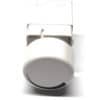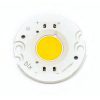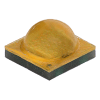Uncategorized
The Rebound Effect in Energy Savings: A Dive into LED Over-illumination
The Rebound Effect in Energy Savings: A Deeper Dive into LED Over-illumination
Introduction:
The Rebound Effect, also known as the Jevons Paradox, posits that as technological improvements increase the efficiency of resource use, consumption of that resource may increase, rather than decrease. This phenomenon is increasingly being examined in the context of LED lighting technology, which has been hailed for its energy efficiency but may, paradoxically, be contributing to greater energy consumption.
Historical Context:
The term “Jevons Paradox” was named after the British economist William Stanley Jevons, who observed in the 19th century that improvements in coal engine efficiency led to increased coal consumption.
– **Reference**: Jevons, W. S. (1865). “The Coal Question; An Inquiry Concerning the Progress of the Nation, and the Probable Exhaustion of Our Coal Mines.”
Mechanisms of the Rebound Effect:
1. **Direct Rebound**: Increase in the use of energy-efficient devices. Powered lighting is price elastic. In other words, changes in costs of lighting have a relatively large effect on the quantity of the goods demanded. When costs are reduced due to the emergence of LEDs, quantity demanded for LEDs increases more than proportionately. The reach of current led technology and its effect on total energy consumption may have never been fully considered in the context of energy use, massive led information screens, wearable leds, leds in carpets
2. **Indirect Rebound**: Savings from energy-efficient devices spent on other goods and services that require energy to produce.
3. **Economy-wide Rebound**: Increased energy consumption at the macroeconomic level due to lower energy prices.
– **Reference**: Sorrell, S., Dimitropoulos, J., & Sommerville, M. (2009). “Empirical estimates of the direct rebound effect: A review.”
#### The Rebound Effect in LED Lighting:
LEDs are up to 80% more efficient than traditional lighting like incandescent bulbs. This efficiency has led to a broader application—more spaces are being lit and for longer durations, sometimes unnecessarily. This overuse can negate the energy savings LEDs are meant to bring.
– **Reference**: Tsao, J. Y., Saunders, H. D., Creighton, J. R., Coltrin, M. E., & Simmons, J. A. (2010). “Solid-state lighting: an energy-economics perspective.”
#### Evidence of Rebound in Lighting:
Studies have shown that the lower cost of operating LEDs often encourages over-illumination, with some estimates suggesting that the rebound effect could offset 5-12% of the expected energy savings.
– **Reference**: Gillingham, K., Rapson, D., & Wagner, G. (2016). “The Rebound Effect and Energy Efficiency Policy.”
#### The “Greener” Misconception:
LEDs are often considered a ‘green technology’ but their environmental footprint is not zero. The rebound effect demonstrates that the transition to LEDs doesn’t automatically equate to a reduction in energy use or carbon emissions.
#### Countermeasures:
1. **Public Awareness**: Educate consumers about the rebound effect to encourage mindful usage.
2. **Policy Interventions**: Implement regulations to counteract over-illumination.
3. **Smart Technologies**: Utilizing IoT devices for lighting control to prevent overuse.
– **Reference**: Boardman, B. (1991). “The rebound effect for electricity: some UK data.”
#### Conclusion:
While LED technology offers a pathway to reduced energy consumption, the rebound effect is an important caveat. Addressing this issue requires multi-pronged efforts, involving not just technological but also behavioral and policy changes.
By understanding the mechanisms and implications of the rebound effect in LED lighting, stakeholders can more effectively promote energy conservation and mitigate the unintended consequences of this transformative technology.

















